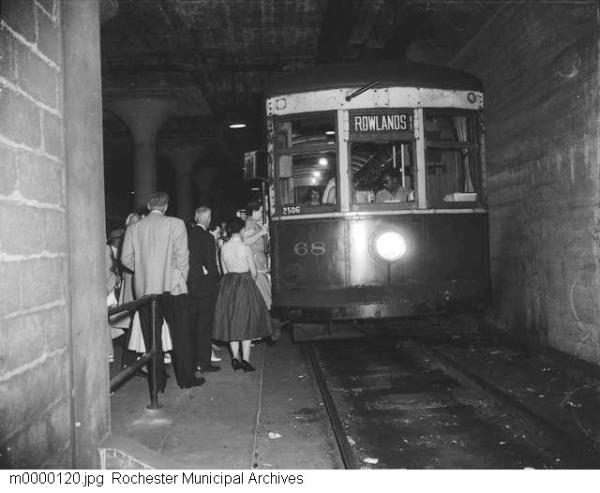Rochester Subway operated in the city of Rochester, New York from 1927 to 1956. Its history dates back to 1918 when the Erie canal was re-routed to bypass downtown Rochester. The empty section of the canal was used as the core of the subway. The train lines were built inside the canal while the subway's roof was turned into Broad street. However, of the approximately 7 miles (11.2 km) of the subway's length, only 2 miles (3.2 km) were underground.
In 1927 Rochester Subway operations began under contract with New York State Railways. The line was also used by interurban railways with Rochester and Eastern Rapid Railway, Rochester and Syracuse Railroad, and Rochester, Lockport and Buffalo Railroad running trains.
In the aftermath of the Great Depression, New York State Railways fell into bankruptcy and from 1938 the subway was operated by the newly formed Rochester Transit Corporation. To cut costs, the company reduced weekday service and in 1952 Sunday service was eliminated. In 1955 Rochester's city council decided to end all subway service on June 30, 1956. Following the end of passenger service, the biggest part of the subway bed was filled in and used for the construction of interstate 490 and interstate 590. Freight trains kept running on the underground part of the subway until 1996.
Rochester city officials have decided several times to fill the remaining abandoned part of subway, however those plans were controversial. Others have suggested to built a new subway system using the same tunnel or an underground walkaway. And some others would prefer to see the abandoned tunnel filled with water, by re-rerouting Erie canal to its original path.





























No comments:
Post a Comment
Spam comments will not be posted. Thank you.